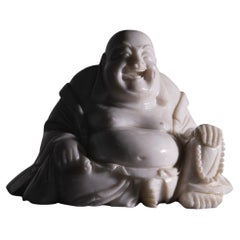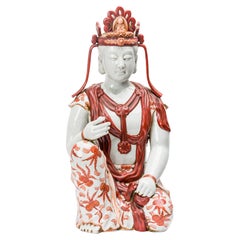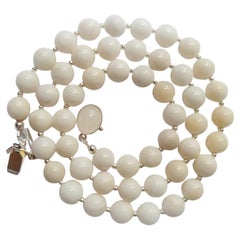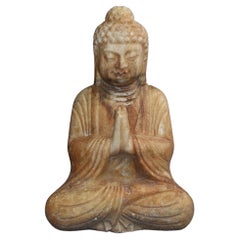Buddha Statue White
Antique Early 1900s Chinese Chinoiserie Sculptures and Carvings
Jade
20th Century Tibetan Tibetan Figurative Sculptures
Porcelain
Recent Sales
2010s American Beaded Necklaces
Jade, Sterling Silver
20th Century Chinese Qing Statues
Marble
Antique 18th Century Burmese Other Sculptures
Marble
Late 20th Century Italian Modern Figurative Sculptures
Porcelain
20th Century Other Art Style Figurative Sculptures
Precious Stone, Wood
Mid-20th Century Nepalese Sculptures and Carvings
Bronze
Mid-20th Century Nepalese Sculptures and Carvings
Bronze
Mid-20th Century Nepalese Sculptures and Carvings
Bronze
2010s Contemporary Figurative Sculptures
Plexiglass, Acrylic
20th Century Chinese Sculptures and Carvings
Brass
2010s Contemporary Figurative Sculptures
Plexiglass, Acrylic
2010s Contemporary Figurative Sculptures
Lucite, Acrylic
2010s Contemporary Figurative Sculptures
Lucite, Acrylic
20th Century Chinese Sculptures and Carvings
Stone
20th Century Chinese Sculptures and Carvings
Stone
20th Century Chinese Sculptures and Carvings
Stone
20th Century Chinese Sculptures and Carvings
Stone
2010s Contemporary Figurative Sculptures
Plexiglass, Acrylic
Antique 18th Century Burmese Anglo-Indian Sculptures and Carvings
Alabaster
2010s Contemporary Figurative Sculptures
Plexiglass, Acrylic
2010s Contemporary Figurative Sculptures
Plexiglass, Acrylic
2010s Contemporary Figurative Sculptures
Plexiglass, Acrylic
1890s More Art
Porcelain
20th Century Chinese Sculptures and Carvings
People Also Browsed
Early 20th Century Tibetan Tibetan Central Asian Rugs
Wool
Antique 19th Century Tibetan Busts
Iron, Gold Leaf
Antique Late 19th Century Tibetan Sculptures and Carvings
Wood, Lacquer, Paint
Antique Mid-19th Century Tibetan Tibetan Mounted Objects
Silver
Antique Late 19th Century Chinese Chinese Export Furniture
Wood
2010s Chinese Sculptures and Carvings
Multi-gemstone, Quartz
2010s Italian Wardrobes and Armoires
Walnut
Antique 19th Century Tibetan Paintings and Screens
Canvas, Glass, Wood
Mid-20th Century Indian Tibetan Snuff Boxes and Tobacco Boxes
Wood
Antique 18th Century Japanese Antiquities
Iron
Early 20th Century Japanese Taisho Sculptures and Carvings
Granite
20th Century Asian Sculptures and Carvings
Wood
Early 20th Century Tibetan Tibetan Furniture
Cedar
21st Century and Contemporary Spanish Animal Sculptures
Porcelain
Antique 19th Century Tibetan Tibetan Shadow Boxes
Stone, Silver
Mid-20th Century Nepalese Sculptures and Carvings
Bronze
Buddha Statue White For Sale on 1stDibs
How Much is a Buddha Statue White?
- How do I choose a Buddha statue?1 Answer
 Lotus GallerySeptember 23, 2020
Lotus GallerySeptember 23, 2020A Buddha statue is very personal. You should choose one that speaks to you. If you are a practitioner, you can ask your teacher for assistance as well.
- Are Buddha statues Chinese?1 Answer1stDibs ExpertApril 5, 2022China is just one of the many countries that has a tradition of Buddhist sculpture. You can find Buddha statues from many other regions like India and Japan. On 1stDibs, you’ll find a collection of antique and modern Buddha statues from some of the world’s top sellers.
- 1stDibs ExpertApril 5, 2022The purpose of a Buddha statue relates to worship in the Buddhist faith. It provides a point of focus and reflection for Buddhists when they engage in the meditation required to achieve enlightenment. Find a selection of Buddha statues on 1stDibs.
- What do Buddha statues mean?1 Answer1stDibs ExpertOctober 21, 2020
The most commonly represented Buddha in Chinese Buddhist sculpture is Siddhartha Gautama, also known as Shakyamuni, the Enlightened One, or the Gautama Buddha. He is typically depicted seated upon a lotus throne with his hands in the Bhumisparsha mudra, the Gesture of Witness. This gesture symbolizes the moment that the Buddha claimed the earth as witness to his enlightenment and celebrates his unwavering meditative focus.
 Lotus GallerySeptember 23, 2020
Lotus GallerySeptember 23, 2020Buddha statues are not inherently lucky or unlucky, though images of the Fat Buddha (Budai or Hotei), have come to be associated with wealth, knowledge, and luck, with people often rubbing the belly or head.
- 1stDibs ExpertApril 5, 2022Identifying an antique Buddha statue is a specialized skill, which is best learned by studying the history of the preferred materials and techniques that each region used in producing Buddha statues. The simplest way to verify the age of a Buddha statue is to have an expert evaluate it. On 1stDibs, find a range of professionally authenticated Buddha statues.
 PAGODA REDOctober 21, 2020
PAGODA REDOctober 21, 2020Most ritual figures depict the Buddha in one of three postures: seated, standing, or reclining. Differences in expression, hand gesture (mudras), and accompanying objects can reveal the figure’s place of origin as well as the particular Buddhist teaching depicted. Such Buddha figures are rendered in a variety of media depending on regional art traditions and intended use, ranging from carved stone to cast bronze to lacquered bamboo.



